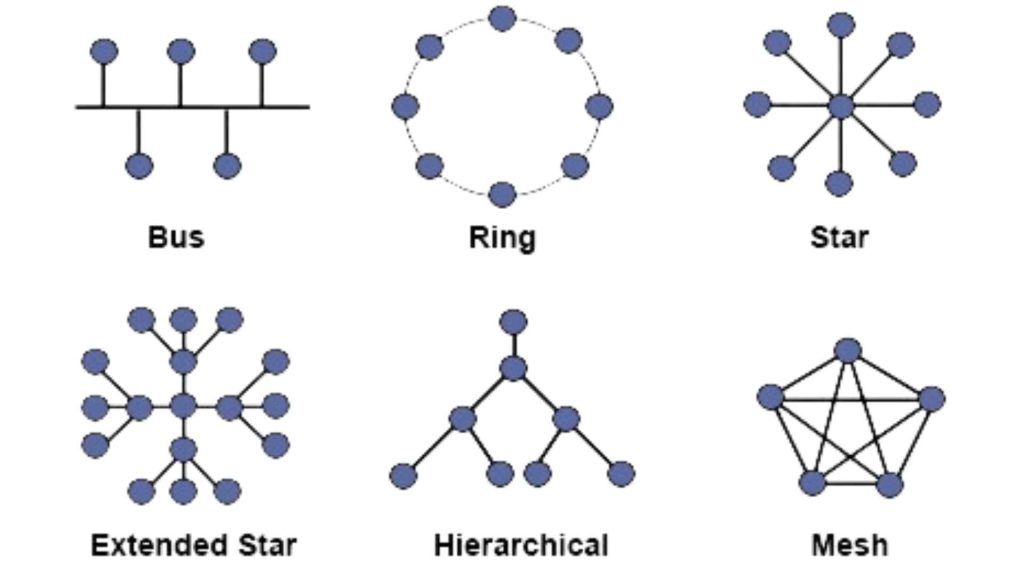For today’s organizations, high-performing network infrastructure is the crucial backbone enabling digital success. But crafting enterprise networks to meet escalating bandwidth, reliability and security demands requires meticulous planning and implementation based on proven methodologies.
In this comprehensive guide, we’ll walk through industry best practices for designing, deploying and managing robust network architectures ready for the modern era.
Table of Contents
Why Network Infrastructure Matters

Network infrastructure refers to the underlying hardware, connectivity, software and services that together enable communication, collaboration, and data exchange across an organization. Core components include:
- Wired network equipment — Switches, routers, gateways, cables, controllers.
- Wireless equipment — Access points, controllers, bridges.
- Servers, storage and hardware appliances.
- Critical IT infrastructure — Firewalls, load balancers, VPNs.
- Software and services — DHCP, DNS, SNMP, network monitoring.
The network infrastructure backbone impacts:
- Employee productivity and business process efficiency. Reliable access to applications and resources is essential.
- Application performance and availability. A poorly designed network chokes bandwidth hungry apps.
- Organizational agility and scalability. Networks must evolve to support M&A, growth in users and locations.
- Security posture and access controls. Infrastructure controls like firewalls underpin defenses.
That’s why implementing network infrastructure using robust technical methodologies aligned to business goals is so crucial.
Planning Your Network Infrastructure Design
Creating an optimal network design requires detailed planning activities:
Conduct Thorough Needs Assessment
- Project estimated growth in number of users, endpoints, applications.
- Identify bandwidth needs for critical applications and usage patterns.
- Determine connectivity requirements across all locations and remote access needs.
- Define essential performance metrics like uptime, latency, packet loss and throughput.
Evaluate Network Topology Options

- Assess topological models like star, mesh, bus, ring, and hybrid combinations against needs.
- Select optimal topology focused on performance, redundancy, and scalability requirements.
For example, a hub-and-spoke model offers easy centralized management while a mesh topology provides redundancy. Consider future expansion and adaptability.
Choose Network Hardware and Software
- Size and select routers, switches, controllers, firewalls, and WiFi access points to meet capacity, speed, and feature requirements.
- Determine any necessary load balancers, VPN concentrators, SD-WAN devices based on the architecture.
- Select network management software like SNMP tools.
Plan Security and Access Controls

- Authenticate network devices and users securely via protocols like 802.1X.
- Implement firewalls and VPNs for site-to-site connectivity and remote access.
- Control access through VLAN segmentation, ACLs, and role-based policies.
- Select encryption like IPsec VPNs and TLS for data security.
Design for High Availability and Disaster Recovery
- Build in redundancy and failover capabilities to mitigate downtime from outages or disasters.
- Implement backup power sources like uninterruptible power supplies (UPS).
- Choose data replication and failover mechanisms to ensure continuity.
Best Practices for Smooth Network Infrastructure Deployments
With thorough planning completed, use these tips for successful rollouts:
Test Extensively Before Production Implementation
- Validate the design at smaller scale first to uncover any flaws.
- Load test network throughput and failover capabilities.
- Refine configurations, IP schemes, routing policies based on learnings.
Leverage Change Management Processes
- Document all configuration changes, device IPs, policy updates in a centralized system.
- Schedule changes and upgrades during maintenance windows to minimize disruptions.
Train IT Teams Managing the New Environment
- Educate network engineers on how to master new hardware, topologies, and management software.
- Transfer knowledge via training sessions and ops runbooks.
Maintain Architectural Diagrams and Documentation
- Keep network topology diagrams updated reflecting physical layouts and logical connectivity flows.
- Thoroughly document IP schemes, access control lists, SNMP communities.
Build in Modularity and Scalability
- Plan capacity expansion of network hardware to support incremental growth.
- Keep firmware and management software updated to leverage new capabilities.
- Implement modular designs allowing components to scale independently.
Avoiding Pitfalls Through Lessons Learned
Steer clear of these all-too-common missteps:
- Inadequate testing resulting in flaws undiscovered until production rollout.
- No change approval workflow causing disruption from unauthorized changes.
- Lack of monitoring and alerting to quickly detect performance issues or outages.
- Overly tight coupling making isolated changes impossible and hampering troubleshooting.
- Outdated documentation complicating maintenance and jeopardizing recoverability.
By learning from past mistakes, companies can mitigate risks and smooth out network infrastructure deployments.
Maintaining Peak Performance and Security
Ongoing maintenance is also key for optimized networks:
- Continuously monitor performance — availability, latency, bandwidth, device health.
- Perform periodic penetration testing and security audits to uncover vulnerabilities.
- Keep architecture diagrams and configuration documentation updated.
- Schedule regular maintenance windows for upgrades, patches, testing.
- Educate IT staff continuously on evolving network standards, best practices, and new equipment.
With vigilant management and a culture of continuous improvement, network infrastructure sustains high-speed secure connectivity enabling business success.
Conclusion
A robust Network Infrastructure Design is essential for modern businesses. It ensures smooth operations, security, and scalability. By following best practices in design and implementation, businesses can ensure that their network is ready to handle future growth and challenges.
FAQ’s
The topology impacts performance, redundancy, expansion flexibility and disaster recovery capabilities. Match to business needs.
Audit at least annually. Review after major changes, outages or performance issues to verify desired state.
Absolutely. Proper design ensures efficiency, security and business growth. DIY risks downtime from flaws.
Critical. IT teams must master new hardware, configurations, management software for smooth operations.
Use NGFWs, advanced threat protection, access controls, data encryption, network behavior monitoring, and regular auditing.

